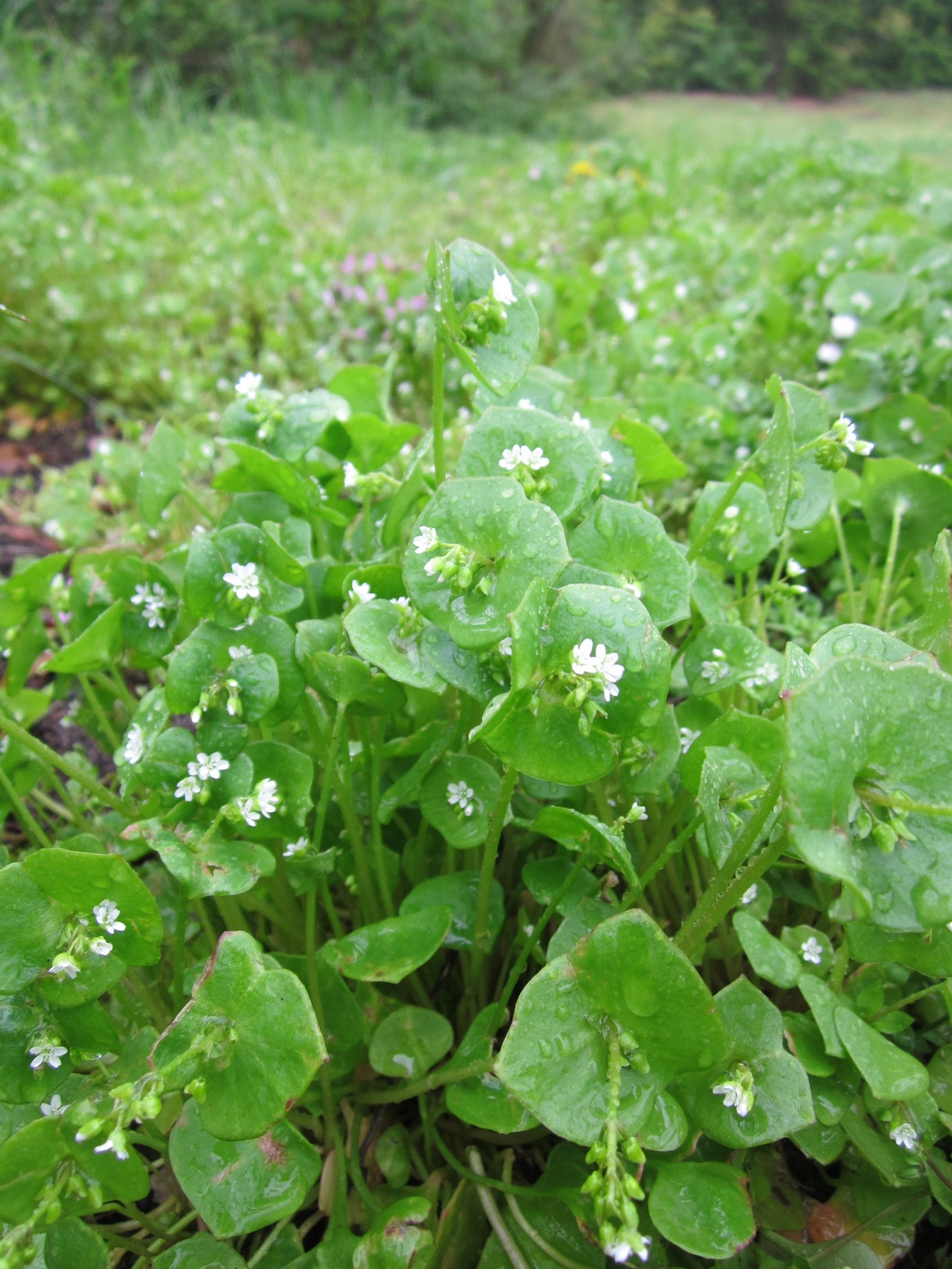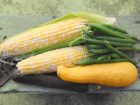Purslane (Portulca oleracea), also known as Pigweed, Little Hogweed or Verdolagas, is cropping up everywhere in my cultivated areas right now. Instead of viewing it as a pesky weed though, I have started to view it more as an advantageous friend, pulling rarely if at all. Purslane has many uses, as a companion plant, as a wild edible, and as a medicinal.
There are 40 named varieties cultivated worldwide. Purslane can easily be identified by its juicy succulent leaves and stems. The leaves are green while the stems are reddish in color. The plant has a spreading habit and is low to the ground. Flowers are usually yellow. It is said that Purslane picked early in the morning is more lemony in taste, and when picked in the afternoon it tends to be more peppery.
As a companion plant, purslane creates humid micro-climates between plantings, serving as a moisture containing ground cover. Although it grows low to the ground it’s roots can penetrate deep, bringing up moisture and nutrients to the surface. It can grow in heavy soils and can help to penetrate clay sub soils.
The entire plant is edible including the seeds and flowers. It can be eaten raw in salads, stir fried, or due to its mucilaginous quality it can be used to thicken soups. Rich in vitamins A, C and E, plus minerals iron, calcium and potassium, purslane contains more Omega-3 fatty acids (particularly alpha-linolenic acid) than any other leafy vegetable in the world. Purslane also has 0.01 mg/g of eicosapentaenoic acid (EPA), the same omega-fatty acid found in sea vegetables, fish, and some flax. In other words, it is a powerhouse of nutrition!
Purslane has been used in Chinese medicine (known as Ma Chi Xian) to clear fire toxicity and cool the blood, and clear damp-heat and treat sores. It is also said to be an effective treatment for oral lichen planus, its leaves are used to treat insect or snake bites, boils, sores, pain from bee stings, bacillary dysentery, diarrhea, hemorrhoids, postpartum bleeding, and intestinal bleeding.
Recipes for using Purslane in the kitchen:
Cucumber Purslane Yogurt Salad
Mexican style eggs with Purslane
Recipes for using Purslane as a medicine:
Photo credit and more info about Purslane
To find locally grown goodies, such as wild edibles, visit us at Pick-A-Pepper.com!
Similar Stories:
- Health and Environmental Hazards of GMOs: An Annotated Bibliography.
- 20 Perennial Crops to Plant Now and Enjoy For A Lifetime.
- How To Grow Stevia and Make Your Own Extract
- All About Growing Rhubarb
- 2 Ways To Use Poisonous Rhubarb Leaves




